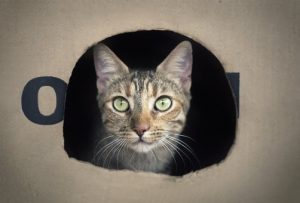By Leonie Schittenhelm
Hello and welcome back to another instalment of ‘Wacky scientific papers with Leonie’! With the winners of the Ig Nobel Prize for Improbable Research 2017 announced just over two weeks ago, it is not surprising that the internet is abuzz with the surprising, mind-blowing and just plain old weird contestants honoured this year. Each year these prestigious prizes are given to research that – in their own words – first makes people laugh and then makes them think. Here we collect some of this year’s winners and mix in some old favourites for good measure. Let us know your favourite funny paper in the comments!
1. ‘On the rheology of cats’ or can a cat be both a solid and a liquid?
 Rheology is a field that is primarily concerned with the flow of matter, both in liquid and solid state. The author of this paper, M.A. Fardin, charmingly argues that cats can behave in different ways depending on the surface they are lying on and the space they are trying to manoeuvre themselves into. His methodology? ‘1. Bring an empty box. 2. Wait.’
Rheology is a field that is primarily concerned with the flow of matter, both in liquid and solid state. The author of this paper, M.A. Fardin, charmingly argues that cats can behave in different ways depending on the surface they are lying on and the space they are trying to manoeuvre themselves into. His methodology? ‘1. Bring an empty box. 2. Wait.’
2. ‘Equations of the End: Teaching Mathematical Modeling Using the Zombie Apocalypse’
 Modelling how quickly and widely infectious diseases can be transmitted is a complex mathematical undertaking but immensely valuable for disease management. But how can you teach these complex mathematical skills to students without scaring them off? Simple answer: Zombies!
Modelling how quickly and widely infectious diseases can be transmitted is a complex mathematical undertaking but immensely valuable for disease management. But how can you teach these complex mathematical skills to students without scaring them off? Simple answer: Zombies!
3. ‘Pigeons can discriminate “good” and “bad” paintings by children’
 A classic in the world of scientific questions no one has even thought of asking before. This study first asked adults to label children’s paintings as either ‘bad/ugly’ or ‘good/beautiful’ and then tried to teach the distinction to pigeons – with surprising successes! Pigeons can apparently learn what is considered beautiful to human eyes and use both colour and pattern of the paintings to come to their assessment.
A classic in the world of scientific questions no one has even thought of asking before. This study first asked adults to label children’s paintings as either ‘bad/ugly’ or ‘good/beautiful’ and then tried to teach the distinction to pigeons – with surprising successes! Pigeons can apparently learn what is considered beautiful to human eyes and use both colour and pattern of the paintings to come to their assessment.
4. ‘Shit happens (to be useful)! Use of Elephant Dung as Habitat by Amphibians’

While clearly important research, the title of this paper is more than cheeky! Even more admirable however is the type of experiments undertaken to yield this data: Ahimsa Campos-Arceiz examined no less than 290 (!) elephant dung piles to see if any amphibians had made their home in them. That’s research dedication right there.
5. ‘What happens if we don’t defend academic freedom’

More serious in tone, this paper was published to protest the increased legal pressures on international universities in general, and the Central European University in particular, that are pushed by an increasingly volatile Hungarian government. The paper itself is short, because what happens if we don’t defend academic freedom? ‘No abstract 1. No introduction 2. No argument and contribution 3. No analysis 4. No conclusion and avenues for future research 5. No more questions asked’.